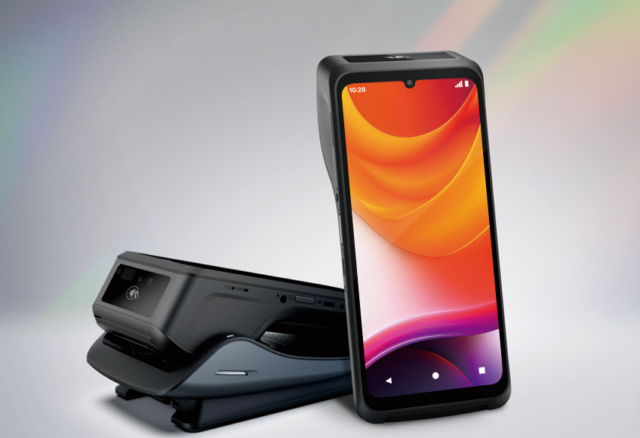August 18, 2025
The Power of Personalisation, Done Right

Personalisation has been a buzzword in retail for the better part of a decade. But when it’s done right (really, really right) it becomes more than a clever marketing trick. Personalisation can become the glue in the customer relationship: invisible, essential, and hard to replicate.
Your app is the most personal channel you have; one your customers have chosen to download, perhaps log into, and interact with in a high-attention environment. It’s intimate, it’s data-rich, and it’s ready made for meaningful personalisation. But with that power comes a need for caution; crossing the line into what a customer may consider to be creepy behaviour, and you risk eroding the very loyalty you’re trying to build.
The Fine Line Between Personal and Creepy
Sarah Toms Retail Growth Director at UK app developer Apadmi explains that in the rush to be ‘personal’, too many brands fall into the trap of just being persistent. We’ve all had the experience…browse a product once, and then feel haunted by it for weeks. It’s an instant trust-killer.
Let’s be honest; this kind of lazy, cookie-cutter personalisation is still far too common, and it’s giving the entire concept a bad name. It’s not strategic, it’s spammy. Customers want to feel understood, not followed, and there’s a massive difference!
True personalisation is about designing experiences that respond to behaviour, adapt to context, and add meaningful value. Mobile apps give retailers a unique opportunity here. Unlike email or web, an app can deliver contextual personalisation in real time.
In addition to this, a great app will anticipate customer needs. The best retail brands are already acting like intuitive, personal assistants, knowing exactly which products a customer is likely to buy, their preferred size and style, whether they’re shopping for themselves or family, when they tend to shop, and which loyalty rewards truly motivate them.
It’s this kind of situational awareness that enables personalisation to be timely, helpful, and appreciated (rather than creepy).
Get Inspired by Leading Retailers
It’s OK to get inspired by other retailers, other sectors, and other markets (in fact, we highly encourage our clients to do this!). We’re not talking about copying and pasting another brand’s strategy, rather taking your time to research and understand what is working in the wider market, and why. As mentioned, too many brands rush into their own idea of ‘personalisation’ without much thought (a rather costly and ineffective strategy in the long-term).
Sarah notes At Apadmi, we build mobile apps for the biggest brands in retail. One that stands out as getting personalisation nailed just right is the Co-op Members app. It allows members to select personalised offers based on their preferences and behaviours, while also aligning with the brand’s community-first values. Customers receive rewards that feel genuinely relevant to how and when they shop, including real-time prompts, cause-based giving options, and in-store benefits (all without asking for sensitive personal data, or crossing the creepy line). Read a similar example of how Tesco boosted its Clubcard app experience through personalisation.
It’s a simple but effective model that balances value with trust. This model didn’t just come about by accident – it is a direct result of working together to create a clear, considered strategy that drives long-term loyalty. It’s also not a ‘one and done’. We need to consistently review, test, and optimise all elements of the app, including its personalisation features, to ensure the experience continues to add value to the end user.
Another standout is Greggs, whose app is a masterclass in careful personalisation and excellent mobile experience. We sadly can’t take the glory for this one – but it’s one that has impressed our mobile experts at Apadmi HQ.
The app is intuitive, easy-to-use and uses lifecycle-based rewards to keep customers coming back for more. The app features adaptive stamp rewards based on what you buy, convenient location-based features, as well as all important data-driven re-engagement perks personalised to your behaviour. With a 4.8* score across both iOS and Android, it’s clear that their careful mobile personalisation tactics are appreciated by customers.
So, Personal Doesn’t Have to Mean Invasive?
There’s a big misconception in the industry that to personalise effectively, you need to hoard huge amounts of customer data. In reality, some of the most effective personalisation happens with very little information because it’s also about how you use what you’ve got.
That subtle shift matters. It means customers get the benefits of personalisation (smarter suggestions, better deals, faster navigation) without feeling surveilled. It’s loyalty built on transparency and trust.
Privacy is the New UX
We often talk about friction in the customer journey, but one of the most damaging types of friction is psychological. If a customer feels they’ve lost control of their data, or don’t understand how it’s being used, they disengage.
Good mobile design makes privacy feel intuitive. Whether that be through clear permission requests, optional data sharing or a combination of these. Your customer appreciates personalisation that’s explained rather than assumed.
Brands getting this right are almost treating privacy as a feature. They let customers shape their own experience; what to opt into, how often contact is made, and what kind of recommendations they receive. That control builds confidence, and confidence builds loyalty.
What Next for Mobile Personalisation?
Looking ahead, the next wave of mobile personalisation is about smarter experiences built with the right platforms and seamless integrations that add value, rather than friction. Expect to see more micro-personalisation driven by moment-specific context: where the customer is, what they’re doing, and how they’re feeling.
We’re already seeing early signals of this in the work we’re exploring with our retail clients around light AR overlays, smart store navigation, and location-sensitive offers designed to enhance real-time relevance (whilst avoiding invading privacy).
Retailers who focus on respectful, relevant, and customer-led personalisation will win the long game. Those who don’t will find their app quietly uninstalled.




